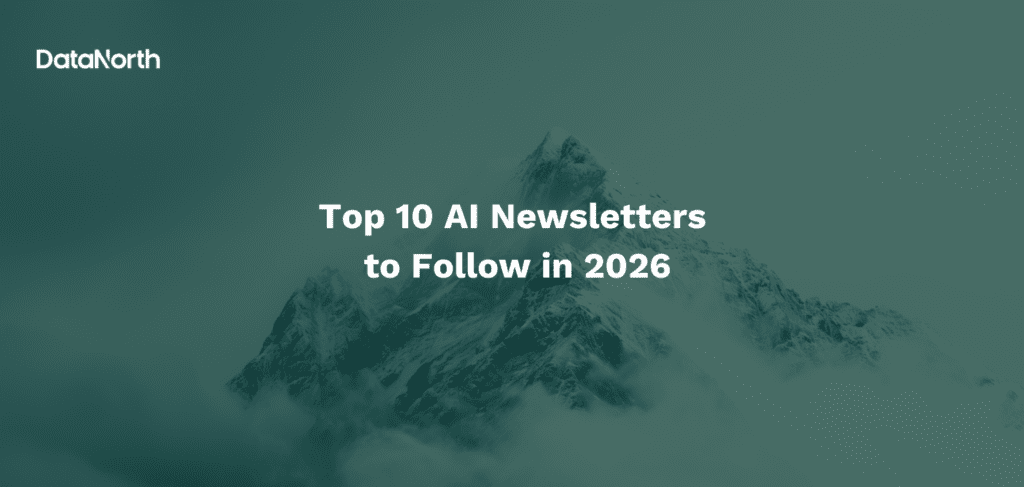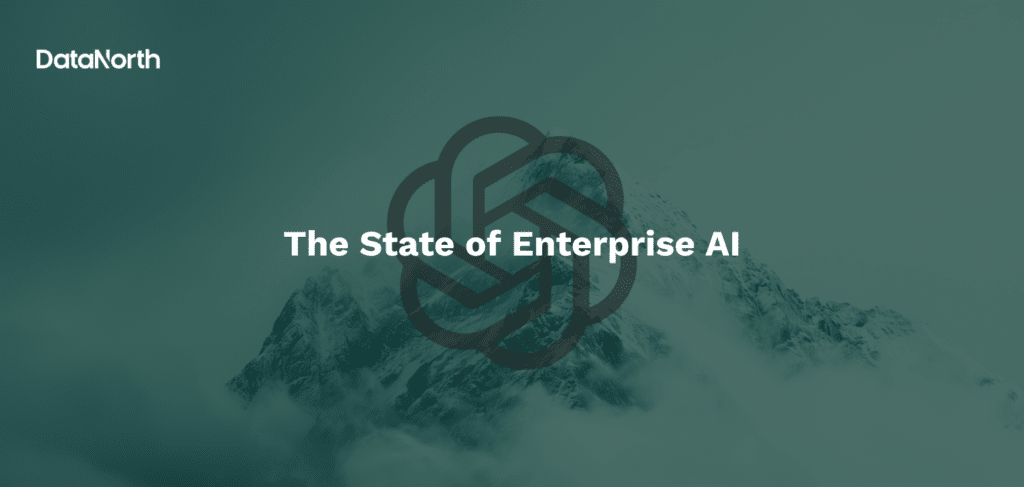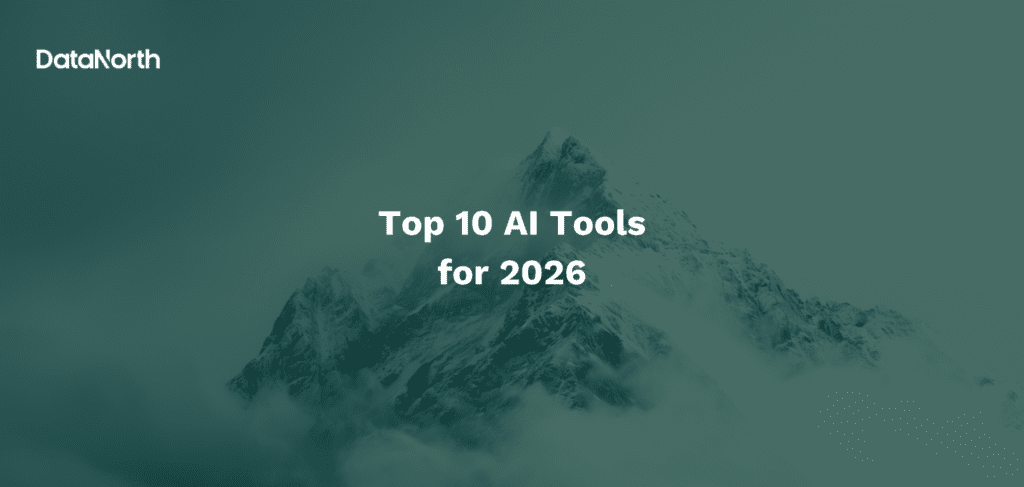Mistral AI has emerged as one of the most compelling alternatives to proprietary AI models. It offers a unique combination of open-source transparency, enterprise-grade performance, and cost efficiency. Founded in 2023 by former Google DeepMind and Meta researchers, this French startup has rapidly positioned itself as Europe’s leading AI champion. Mistral AI raised €1.7 billion in September 2025 at an €11.7 billion valuation, led by ASML. For businesses evaluating AI implementation strategies, Mistral represents a paradigm shift toward open, customizable, and sovereignty-focused artificial intelligence solutions. In this article we dive deeper into Mistral AI, explaining what it is, how to get started, the benefits and limitations, how it compares to competitors and what the future of Mistral AI looks like.
What is Mistral AI?
Mistral AI specializes in developing high-performance large language models with a fundamental commitment to openness and transparency. Unlike closed-source competitors, Mistral provides open-weight models that organizations can download, modify, and deploy without restrictions. This approach addresses critical enterprise concerns around data sovereignty, customization flexibility, and vendor lock-in that have traditionally limited AI adoption in regulated industries.
The company’s flagship offerings include Mistral Large for complex reasoning tasks, Codestral for software development, Pixtral for multimodal applications, and the recently launched Mistral Medium 3.1, which delivers competitive performance at significantly lower costs than proprietary alternatives. These models utilize innovative architectures like Sparse Mixture of Experts, enabling efficient performance with fewer parameters than traditional large language models.
What makes Mistral particularly significant is its role in democratizing access to frontier AI capabilities. While proprietary models require ongoing API subscriptions and offer limited customization, Mistral’s Apache 2.0 licensed models can be fully integrated into enterprise infrastructure, fine-tuned for specific use cases, and deployed entirely on-premises for maximum security and compliance.
Getting started with Mistral AI
API setup and authentication
Setting up Mistral AI begins with creating an account on the platform at console.mistral.ai. After registration, you’ll need to activate billing information even for free tier usage, as this enables API key generation. Navigate to the API Keys section in the console and create a new key with a descriptive name for easy organization.
The API key follows a secure format and is only shown once during creation. Store this securely using environment variables or a password manager, as anyone with access can make billable API calls to your account.
Making your first API call
Once you have your API key, you can start making requests to Mistral’s models. Here’s a Python example using the official Mistral client:
python
import os
from mistralai import Mistral
api_key = os.environ["MISTRAL_API_KEY"]
client = Mistral(api_key=api_key)
response = client.chat.complete(
model="mistral-large-latest",
messages=[
{"role": "user", "content": "Explain quantum computing in simple terms"}
]
)
print(response.choices[0].message.content)Platform options and deployment models
Mistral offers multiple deployment options to suit different organizational needs:
Cloud API: The simplest option, accessing Mistral models through their hosted API endpoints with pay-per-token pricing.
Private cloud deployment: Models can be deployed on Amazon SageMaker, Microsoft Azure AI Foundry, and Google Vertex AI platforms for enhanced security and compliance.
On-premise installation: Complete model deployment within your own infrastructure using specialized hardware configurations for different model sizes.
Hybrid deployment: Combining cloud APIs for development with on-premises deployment for production workloads requiring maximum data sovereignty.
Benefits and advantages of Mistral AI
Cost efficiency and performance optimization
Mistral’s primary advantage lies in its exceptional cost-to-performance ratio. According to Mistral’s September 2024 pricing update, the company reduced prices across the board with significant improvements:
- Mistral Large: $2 per million input tokens, $6 per million output tokens (reduced from $3/$9)
- Mistral Small 3.2: $0.1 per million input tokens, $0.3 per million output tokens (reduced from $1/$3)
- Codestral: $0.3 per million input tokens, $0.9 per million output tokens (reduced from $1/$3)
These costs represent substantial savings compared to proprietary alternatives, making Mistral Large 2 one of the most cost-efficient frontier models available.
Open source flexibility and customization
Unlike proprietary models that restrict access to weights and architecture, Mistral’s open-source approach enables complete customization. Organizations can fine-tune models using their specific datasets, adjust behavior through reinforcement learning, and integrate models directly into existing systems without API dependencies.
This flexibility proves particularly valuable for domain-specific applications. Healthcare organizations can fine-tune Mistral models on medical literature, financial services can adapt them for regulatory compliance, and manufacturing companies can optimize them for technical documentation processing.
Data sovereignty and security
For enterprises in regulated industries, data sovereignty represents a critical concern that Mistral addresses through its deployment flexibility. Organizations can run Mistral models entirely within their own infrastructure, ensuring sensitive data never leaves their control. This approach satisfies stringent compliance requirements in healthcare, finance, and government sectors where data residency and privacy are paramount.
The European focus of Mistral also provides strategic advantages for organizations seeking to reduce dependence on US-based AI providers, particularly in light of increasing geopolitical tensions and regulatory scrutiny.
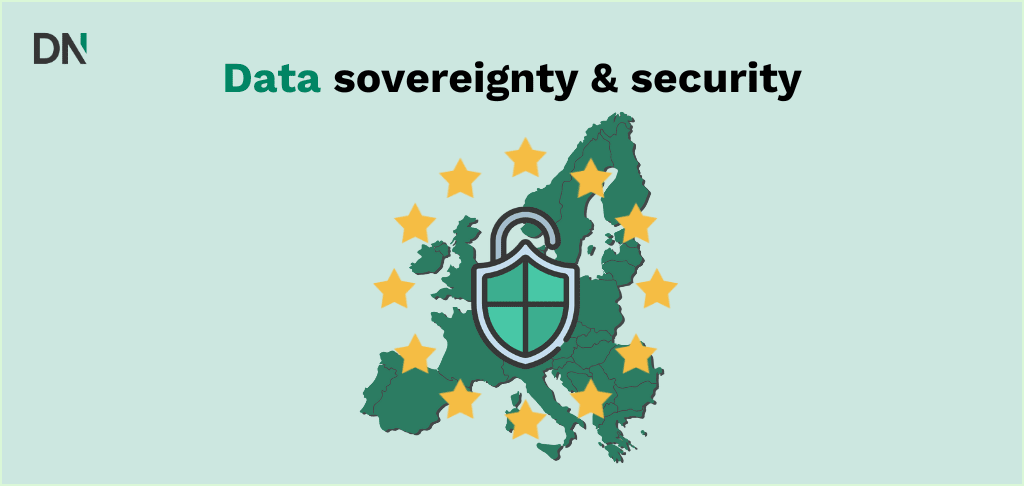
Multilingual and multimodal capabilities
Mistral models excel at multilingual reasoning across 15+ languages including Arabic, Russian, and Chinese, with native-level performance that doesn’t degrade when switching languages mid-task. This capability proves essential for global enterprises operating in diverse markets.
The company’s multimodal offerings, including Pixtral Large for vision tasks and Mistral OCR, enable comprehensive document processing workflows that handle text, images, tables, and handwritten content in a single pipeline.
Limitations and potential downsides
Technical complexity and resource requirements for Mistral AI
While Mistral offers powerful capabilities, implementing these solutions requires significant technical expertise. Unlike plug-and-play services like ChatGPT, Mistral models often need custom integration, fine-tuning, and ongoing maintenance. Organizations without dedicated AI engineering teams may struggle with the complexity of deployment, optimization, and troubleshooting.
The resource requirements for local deployment can also be substantial. Running larger Mistral models requires high-end GPU infrastructure, with models like Mistral Large needing multiple enterprise-grade GPUs for optimal performance. This infrastructure investment may not be cost-effective for smaller organizations or those with limited AI workloads.
Ecosystem maturity and support limitations
Compared to established providers like OpenAI, Mistral’s ecosystem remains relatively immature. Third-party integrations, pre-built connectors, and community resources are more limited, potentially increasing development time and complexity. Some users report slower customer support response times and occasional technical issues that can disrupt workflows.
The documentation and tutorials, while improving, may not match the comprehensive resources available for more established platforms, creating additional challenges for teams new to AI implementation.
Performance considerations in specific domains
While Mistral models perform exceptionally well for their size and cost, they may not match the absolute performance of the largest proprietary models in all scenarios. Complex reasoning tasks, nuanced creative writing, or highly specialized domains might still favor larger models despite the cost premium.
Data quality dependence also affects performance consistency. Mistral models’ effectiveness varies significantly based on training data quality and may struggle with queries outside their training domain more than models with broader training datasets and extensive human feedback.
Key use cases and real world applications
Enterprise document processing and OCR
Mistral’s document AI capabilities excel in processing complex business documents across multiple industries. Financial services organizations use Mistral OCR to extract data from invoices, receipts, and bank statements with high accuracy, automating expense management and accounting workflows. Legal firms leverage these capabilities to digitize contracts, leases, and case files while preserving formatting and structure for searchable databases.
Healthcare institutions process patient intake forms, medical records, and laboratory reports, with multilingual support proving essential for diverse patient populations. The on-premises deployment option ensures HIPAA compliance while maintaining processing efficiency.
Software development and code generation
Codestral, Mistral’s specialized coding model, supports over 80 programming languages and excels at code generation, debugging, and optimization tasks. Development teams use it for automated code completion, bug detection, and technical documentation generation. The model’s fill-in-the-middle capability makes it particularly effective for IDE integration and real-time coding assistance.
Major technology companies have reported significant productivity gains, with developers completing coding tasks more efficiently when using Codestral for routine programming activities. The model’s understanding of multiple programming paradigms and frameworks makes it valuable for diverse development environments.
Customer service automation and chatbots
Mistral models power sophisticated customer service systems that handle complex inquiries across multiple channels. The multilingual capabilities enable global organizations to provide consistent support in local languages, while the customization flexibility allows fine-tuning for industry-specific terminology and workflows.
CMA CGM, a global logistics company, uses Mistral AI to power MAIA, their internal personal assistant that handles employee queries, automates routine tasks, and provides real-time information access across their 160-country operation.
Data analysis and business intelligence
Organizations leverage Mistral models for natural language querying of business data, automated report generation, and insight extraction from complex datasets. Financial institutions use these capabilities for risk assessment, fraud detection, and regulatory reporting, while manufacturing companies apply them to quality control analysis and supply chain optimization.
The models’ mathematical reasoning capabilities make them particularly effective for quantitative analysis, financial modeling, and scientific computing applications where accuracy and reliability are paramount.
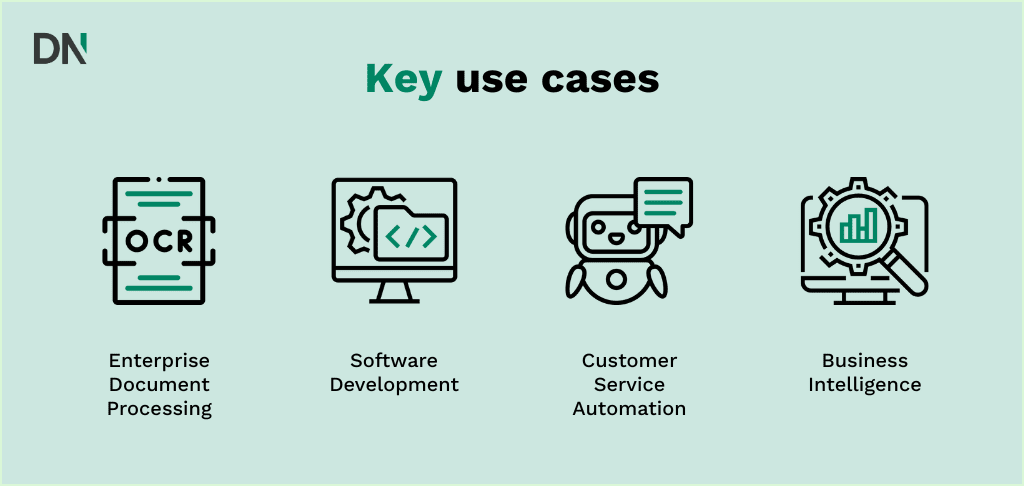
Competitor comparison
| Feature | Mistral AI | OpenAI GPT-4 | Anthropic Claude | Google Gemini |
| Pricing (input/output per 1M tokens) | $2/$6 (Large) | $30/$60 | $15/$75 (Opus) | $1.25/$10 (Pro) |
| Open source | Yes (Apache 2.0) | No | No | No |
| On-premises deployment | Yes | No | No | Limited |
| Context window | 128k tokens | 128k tokens | 200k tokens | Up to 10M tokens |
| Multilingual support | 15+ languages | Strong | Good | Strong |
| MMLU score | 81% (Small 3.1) | 86.4% | 85% | 85%+ |
| HumanEval (coding) | 88.4% (Small 3.1) | 87.2% | 88.1% | Variable |
| Data sovereignty | Full control | Cloud only | Cloud only | Cloud only |
| Custom fine-tuning | Unlimited | Limited | No | Limited |
| Enterprise support | Yes | Yes | Yes | Yes |
| Multimodal capabilities | Yes (Pixtral) | Yes | Yes | Yes |
The fundamental difference between Mistral and its competitors lies in the open-source approach. While OpenAI operates a closed-source model with API-only access, Mistral provides open-weight models that can be fully customized and deployed independently.
Performance-wise, GPT-4 typically leads in complex reasoning benchmarks, but Mistral achieves competitive performance at significantly lower computational and financial costs. For enterprises requiring customization, data sovereignty, or cost optimization, Mistral offers compelling advantages.
Claude’s constitutional AI approach provides advantages in applications requiring careful ethical considerations, while Google Gemini offers deeper integration with Google’s ecosystem. However, neither provides the deployment flexibility and cost efficiency that Mistral’s open-source model enables.
Future outlook and roadmap for Mistral
Model development and capabilities expansion
Mistral’s 2025 roadmap includes continued expansion of specialized models for specific domains and use cases. The company has already released Magistral for reasoning tasks, enhanced multimodal capabilities through Pixtral Large, and improved efficiency with models like Ministral for edge computing applications.
Future developments will likely focus on extending context windows, improving reasoning capabilities, and developing more efficient architectures that maintain performance while reducing computational requirements. The company’s commitment to open-source development ensures these advances will be accessible to the broader AI community.
European AI sovereignty initiatives
The most significant development in Mistral’s roadmap involves European AI sovereignty initiatives. The company’s partnerships with French defense agencies and government institutions position it as a key player in Europe’s strategic push for AI independence from US-based providers.
These initiatives represent more than technical infrastructure; they embody Europe’s commitment to maintaining control over critical AI technologies while ensuring compliance with European privacy principles and regulatory frameworks.
Market positioning and competitive strategy
With strong revenue growth and expanding enterprise adoption, Mistral is positioning itself as the primary alternative to US-based AI giants. The company’s European focus and regulatory compliance advantages provide strategic differentiation, particularly as data sovereignty concerns drive enterprise decision-making.
The combination of open-source accessibility, competitive performance, and cost efficiency creates a compelling value proposition for organizations seeking alternatives to proprietary AI solutions.
How to get started with Mistral?
Evaluation and proof of concept development
Begin your Mistral AI journey with a focused proof of concept that addresses a specific business challenge. Start with the free API tier to test basic functionality, then move to more comprehensive evaluation using your actual data and use cases. Focus on scenarios where Mistral’s strengths in cost efficiency, customization, or data sovereignty provide clear advantages over existing solutions.
Establish success metrics that align with your business objectives, whether cost reduction, performance improvement, or operational efficiency gains. Document baseline performance with current solutions to enable accurate comparison and ROI calculation.
Technical infrastructure planning
Assess your current infrastructure capabilities and determine the optimal deployment model for your organization. Cloud API integration offers the fastest path to implementation, while on-premises deployment provides maximum control and compliance benefits but requires significant technical planning.
For organizations planning local deployment, conduct thorough hardware assessment and capacity planning. Engage with Mistral’s enterprise team early in the process to ensure proper licensing, support arrangements, and technical guidance for complex implementations.
Team preparation and skill development
Invest in team training and capability development before full-scale implementation. Mistral’s technical complexity requires skilled personnel for effective deployment and ongoing management. Consider partnering with experienced AI consultants or system integrators who have Mistral expertise to accelerate implementation and reduce risk.
Develop clear governance frameworks for AI use, including data handling procedures, security protocols, and compliance requirements. Establish monitoring and evaluation processes to ensure ongoing performance optimization and risk management.
The choice to adopt Mistral AI represents more than a technology decision; it’s a strategic commitment to open, transparent, and sovereign AI capabilities that can be fully integrated into your organization’s infrastructure and optimized for your specific needs. With proper planning, technical preparation, and strategic implementation, Mistral AI offers a compelling path toward more cost-effective, customizable, and control-oriented artificial intelligence solutions.




